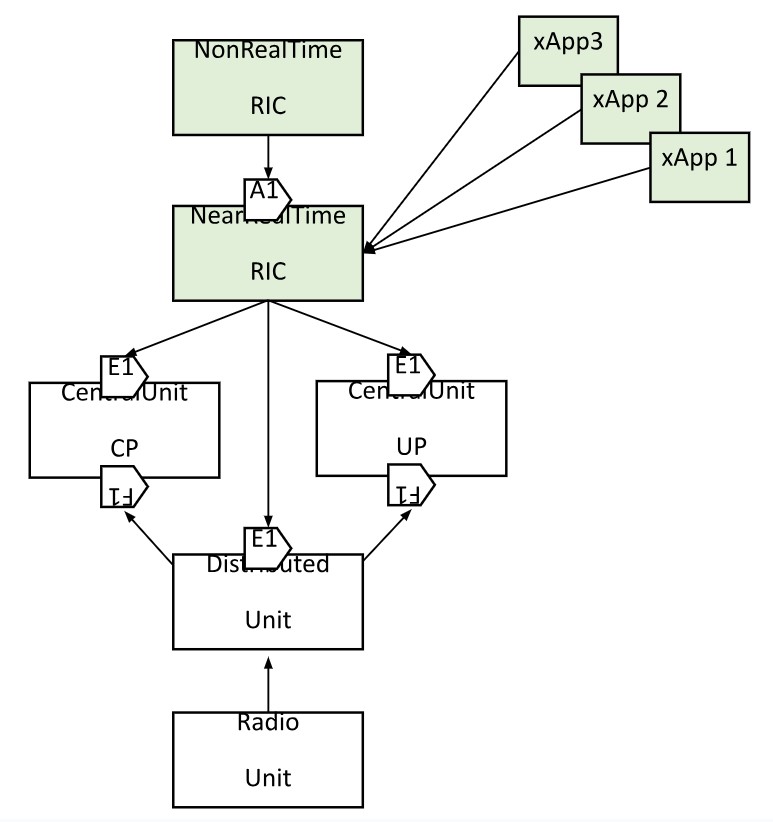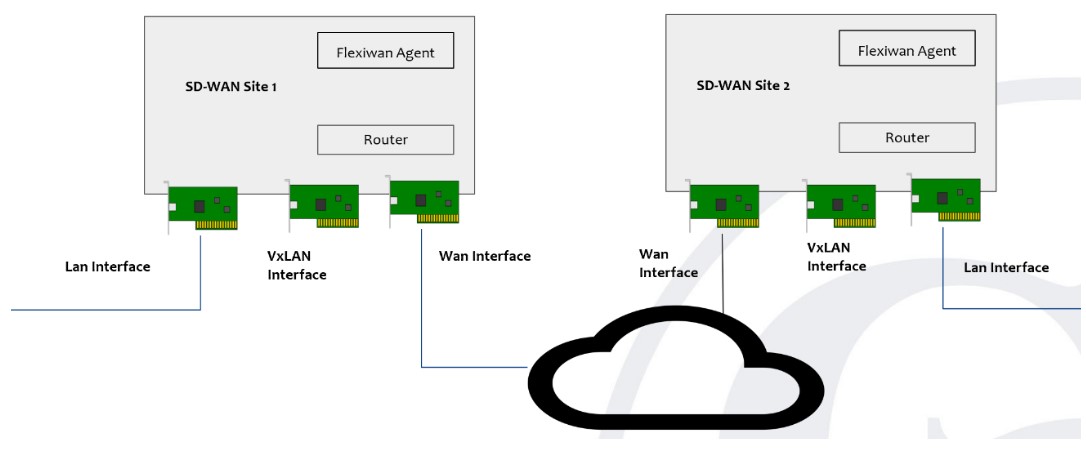Use Cases
Genie in a Network (GIN)™ platform comes with a number of use cases implemented to demo how to deploy various network functions/services.
A. ORAN Service Model – demonstrates TOSCA based O-RAN deployments, focusing on the following:
- Cloud infrastructure deployments, including at the Edge
- Deployment of all O-RAN components, including SMO & RICs. CU, DU, and RU have not been implemented due to incomplete open source solutions at the present. The model will be enhanced as O-RAN-SC introduces support for those components.
- Deployments for traffic steering consisting of QP (QoE Predicter), QP-driver (helper function between TS and QP), and TS (Traffic Steering) xApps

The use case consists of 5 TOSCA models one each for non-real time RIC, near-real time RIC, and each of the xApps. The non-realtime and near-real time RIC components are deployed as Kubernetes pods using Helm charts packaged as artifacts in their respective TOSCA model archives (.CSAR files). The xApp TOSCA models have support for xApp onboarding and deployment.
B. SD-WAN Service Model – software-defined wide-area network is a specific application of software-defined networking (SDN) technology applied to WAN connections such as broadband internet, 4G, LTE, or MPLS. It connects enterprise networks — including branch offices and data centers — over large geographic distances.
GIN has an SD-WAN use case modelled in TOSCA to demonstrate one of the key aspects of SDWAN which is secured tunneling of data between two sites. This is achieved using open source SDWAN software from flexiWAN. The actual orchestration of the SDWAN components is done by the GIN life cycle manager.

The objective of the use case is to demonstrate how GIN can perform lifecycle management of SD-WAN service without using the SD-WAN controller. Following steps were undertaken for the proof-of-concept solution:
- Deploy 2 SD-WAN devices in form of Linux virtual machines running on separate networks
- Install Flexiwan software on each device
- Start SD-WAN router service on each device
- Create secure tunnel endpoints
- Test branch connectivity between the end-points.
Steps#3 – #5 are done without engaging the Flexiwan controller. Instead, they are achieved through artifacts that are packaged with the TOSCA model.
C. Firewall Service Model – adopted from ONAP. It is composed of three virtual functions (VFs): packet generator, firewall, and traffic sink. These VFs run in three separate VMs. The packet generator sends packets to the packet sink through the firewall. The firewall reports the volume of traffic passing though to a collector. The packet generator includes a script that periodically generates different volumes of traffic. The closed-loop policy has been configured to re-adjust the traffic volume when high-water or low-water marks are crossed.

In ONAP the firewall is not based on a pure TOSCA model. Instead, it consists of heat templates packaged in a TOSCA .CSAR file. For GIN, the use case was designed from grounds-up to be completely specified using TOSCA spec 1.3. The use case demonstrates how you can deploy a firewall service using a pure TOSCA model that supports inferred workflow generation, policy definition in the model, a multi-cloud deployment using TOSCA substitution mapping, network set up, and infrastructure set up.